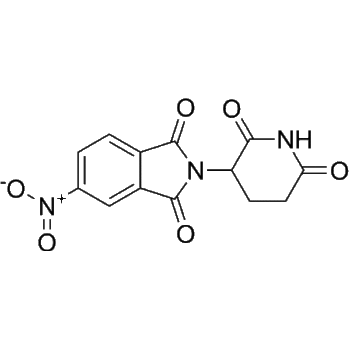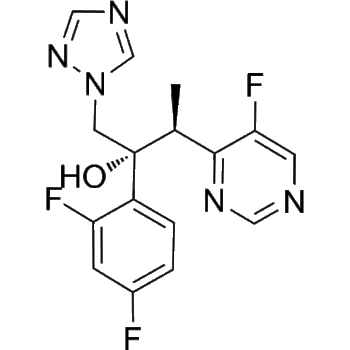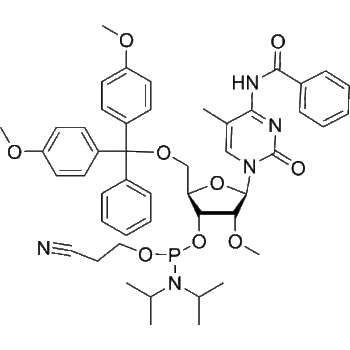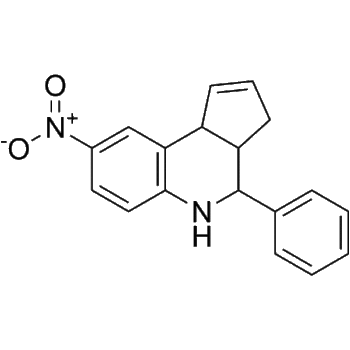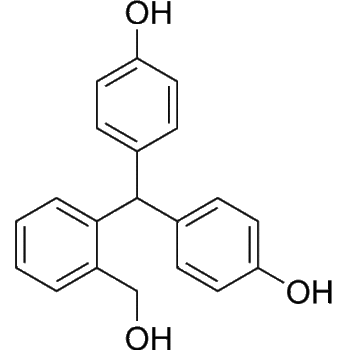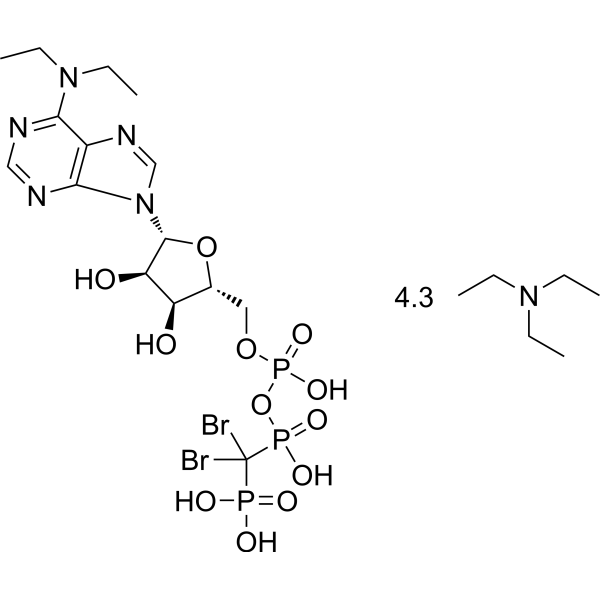
Download Files:
ARL67156 (triethylamine)
SKU
HY-103265D-1 mg
Category Reference compound
Tags Inflammation/Immunology; Cardiovascular Disease, Metabolic Enzyme/Protease, Phosphatase
$180 – $5,350
Products Details
Product Description
– ARL67156 (FPL 67156) triethylamine is a selective ecto-ATPase inhibitor. ARL67156 triethylamine is a competitive inhibitor of NTPDase1 (CD39), NTPDase3 and NPP1, with Kis of 11, 18 and 12 μM, respectively. ARL67156 triethylamine can be used in the research of disease like calcific aortic valve disease, asthma[1][2].
Web ID
– HY-103265D
Storage Temperature
– -20°C, 3 years; 4°C, 2 years (Powder)
Shipping
– Room Temperature
Applications
– COVID-19-immunoregulation
Molecular Formula
– C15H24Br2N5O12P3.(4.3C6H15N)
References
– [1]évesque SA, et al. Specificity of the ecto-ATPase inhibitor ARL 67156 on human and mouse ectonucleotidases. Br J Pharmacol. 2007 Sep;152(1):141-50. |[2]Nancy Côté, et al. Inhibition of Ectonucleotidase With ARL67156 Prevents the Development of Calcific Aortic Valve Disease in Warfarin-Treated Rats. Eur J Pharmacol. 2012 Aug 15;689(1-3):139-46. |[3]Flávio P Veras, et al. Fructose 1,6-bisphosphate, a high-energy intermediate of glycolysis, attenuates experimental arthritis by activating anti-inflammatory adenosinergic pathway. Sci Rep. 2015 Oct 19;5:15171. |[4]C Kennedy, et al. ATP as a co-transmitter with noradrenaline in sympathetic nerves–function and fate. Ciba Found Symp. 1996;198:223-35; discussion 235-8. |[5]Ya-Dong Gao, et al. Th2 cytokine-primed airway smooth muscle cells induce mast cell chemotaxis via secretion of ATP. J Asthma. 2014 Dec;51(10):997-1003. |[6]Casilde Sesti, et al. EctoNucleotidase in cardiac sympathetic nerve endings modulates ATP-mediated feedback of norepinephrine release. J Pharmacol Exp Ther. 2002 Feb;300(2):605-11. |[7]Julieta Schachter, et al. Inhibition of ecto-ATPase activities impairs HIV-1 infection of macrophages. Immunobiology. 2015 May;220(5):589-96.
Molecular Weight
– 1154.23
Compound Purity
– 98.0
SMILES
– O[C@H]1[C@@H](O[C@H](COP(OP(C(Br)(Br)P(O)(O)=O)(O)=O)(O)=O)[C@H]1O)N2C3=C(C(N(CC)CC)=NC=N3)N=C2.CCN(CC)CC.[4.3]
Clinical Information
– No Development Reported
Research Area
– Inflammation/Immunology; Cardiovascular Disease
Solubility
– DMSO : 100 mg/mL (ultrasonic)|H2O : 100 mg/mL (ultrasonic)|Methanol : 125 mg/mL (ultrasonic)
Target
– Phosphatase
Pathway
– Metabolic Enzyme/Protease
Product type
– Reference compound
Disclaimer: All products are for Research use only unless clearly stated otherwise on the product datasheet. Datasheets provided on the website are drafts for reference purpose only and you are requested to always refer to the hard copy included in the kit for your experimentation. Agdia Products are available for delivery only in Canada.
